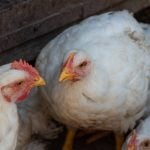Traceability took a belated step forward with Agriculture Minister Hayden and industry representatives signing an agreement on the guiding principles for livestock traceability. Some may see this event as a feel-good opportunity without a lot of substance on a contentious subject. But getting so many diverse cattle industry stakeholders and the government in the same room to agree on anything is a monumental event by itself.
What I suspect may have been the real intent of this agreement was to send a clear signal to federal Ag Minister Ritz and his bureaucrats that their rush towards traceability needs to be moderated with some common sense. The feds seem to want to have cattle traceability operational by 2011. Those who came up with such an early implementation date had no idea what that involved in the countryside real world. A not unusual occurrence with Ottawa bureaucrats.
Read Also

Guarding against misinformation: Do you believe in house hippos?
Misinformation and disinformation run rampant in today’s digital age. Farmers must be wary of the digital dangers and know how to keep themselves safe.
At the summer meeting of the Canadian Cattlemen’s Association, it became clear that because of ear tag technology problems there was no way that a full traceability program could be put into place by such an early date. The biggest problem is the reading of ID tags at a reasonable and reliable speed of commerce, particularly at marketing outlets. Logistic and equipment costs are also significant concerns.
Another underlying factor that raised its head is the question of who all this is going to benefit, and who is going to pay the cost. Cow-calf producers instinctively know from past experience who that will be. I suspect no amount of soothing words by ministers about it being “for the good of the industry” will change grassroots suspicions. That will take actual dollars in producers’ pockets to change. What will help is the recent indication from the federal government that they will contribute to traceability costs along with the industry.
The guidelines do touch on most of the concerns by stating that progressive incremental changes should only occur when benefits and costs are acceptable, and reliable technology is available. If that position is accepted by the feds, traceability may not be fully implemented for a while. Which leads to another question: If present technology isn’t working, how can realistic implementation ever be achieved?
Rumours of dubious tag retention, readability, reliability, and reader costs seem to plague the existing technology. Perhaps what the industry, and specifically the Canadian Cattle Identification Agency (CCIA), need to do is consider taking a great leap forward into new ear tag technology that is presently available.
In another section ofAlberta Farmer,there is a story on the use of ultra-high frequency technology for ear tags. This advanced technology seems to address some of the limitations that are presently plaguing the existing technology, specifically readability, reliability, and equipment costs. The story notes that Wal-Mart will be using this technology to track its vast inventory. If this technology is good enough for Wal-Mart, a company obsessed with cost and efficiencies, surely it should work for the cattle industry. Besides with Wal-Mart setting the traceability standard, it would seem all their suppliers, including beef marketers, would be wise to adopt their standard if they want to do business with this retailing giant.
The CCIA says that they are committed to embracing any new technology that improves efficiencies and reduces cost, and they are familiar with ultra-high-frequency technology. They are at present involved in ultra-high-frequency technology research with Livestock Identification Services and the Southern Alberta Institute of Technology. They are also cognizant of research that has already been done with this technology with livestock in Australia and New Zealand. They are prepared to adopt a different standard if the need is established.
But there could be a fly in the ointment with adopting this new technology any time soon, and that fly would be the Canadian Food Inspection Agency (CFIA). My experience with CFIA is that at times they have their own agenda, regardless of the negative impact on the livestock industry. The CFIA has to approve the use of any new technology in livestock ID as they administer the national enabling legislation.
The CFIA has invested time and energy in establishing the present ear tag technology. I would suspect they are in no mood to see all that work go to waste in favour of another technology, even if it is proven to be better and more cost effective. That would be tantamount to almost admitting they made a mistake; governments and their agencies are loath to even think such thoughts. Therein will probably lie the real problem with adopting new technology anytime soon.
But all is not lost. I believe it would have helped if the Alberta Livestock Traceability Guidelines had also implied that if present traceability technology cannot resolve the present limitations, and that immediate steps should be taken to acquire a technology that does. Ultra-high-frequency technology is a great leap forward, and with the present ongoing problems, this may be the perfect time to make the change and stop spinning our wheels.
———
Isuspectnoamountofsoothing wordsbyministersabout itbeing“forthegoodofthe industry”willchangegrassroots suspicions.














